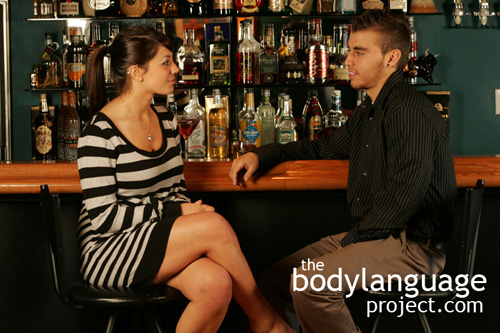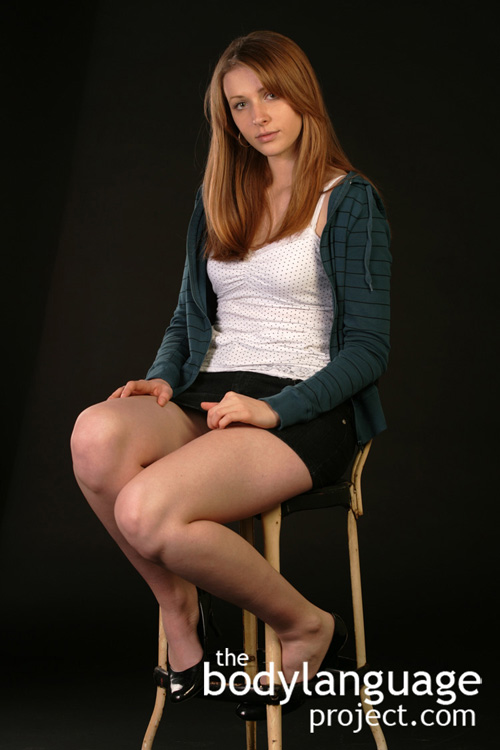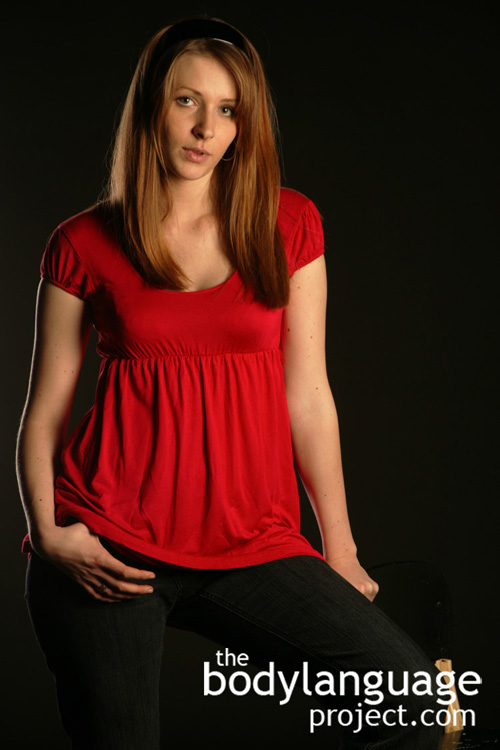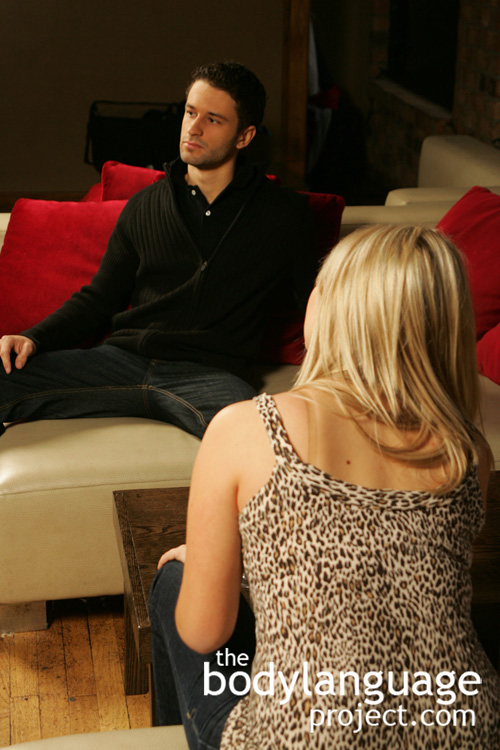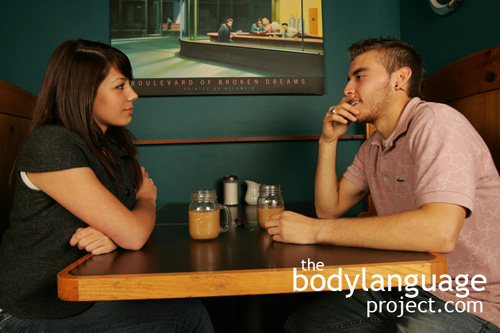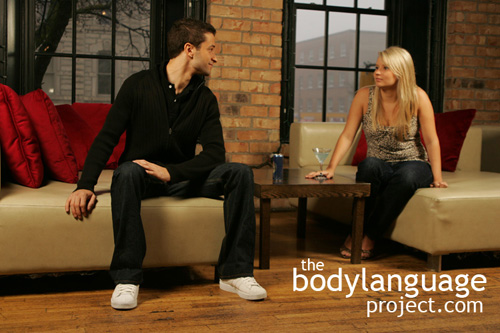The legs are equally as expressive as the arm in terms of the meaning they convey. This is largely because the arms are frequently busy doing other task oriented things whereas the legs usually remain idle free to express hidden thoughts. Of course, the legs also have their share of work to do, but when sitting or standing still they have a tendency to leak information. We also pay less attention to our legs because they move less freely putting them further away from our consciousness. Perhaps we feel that because our legs can only do so much we need not pay them any mind and so reason we ignore them.
The legs therefore, are a great indicator of true thoughts and feelings. For example, we might look to the legs to verify interest. The legs crossed toward something or someone indicates thoughts and shows an attraction in the direction. In other words the legs are propelled in the direction in which we think. Couples that have a strong relationship will cross their legs toward each other, enemies will cross away, context permitting of course. Lovers sitting on a couch together with their legs crossed toward each other, bodies leaning inward, with their arms meeting over the backs of the couch are said to be in a “loving circle.” This is not a term reserved for just intimate couples though, it can also apply to family, close friends and even associates, both male and female. It represents a likeness of mind – agreement. Caution is required at this point, since not everyone is equally able or willing to cross their legs in either direction. Over time, we tend to develop greater flexibility in one direction, or the other, simply through habit, so it’s not always a valuable signal if a person crosses their legs away from someone else. If they lean and cross away from each other, then these two clues, in context, might mean something is worth exploring further.
It has been noted in several studies that the amount of movement that the feet undergo while lying significantly increases, and that these movements are below the level of consciousness. It’s fairly easy to monitor our arms and (with limited success), our facial expressions, but it’s something else to monitor a distant part like our feet. The leg tap, where the hand rhythmically taps the thigh can be done out of fear or deceit, even out of fear of being caught, uneasiness and even boredom, depending on the remaining set of cues in a cluster and on the particular context by which they occur. What we do below the belt is out of sight and out of mind!
Legs
uncrossed is a signal of openness, acceptance and signal of being easy going. This is of particular importance as it pertains to women, as it can taken as a sexual signal or invitation, making women appear easy, “loose” or at best crass or improper. Sharon Stone in the movie Basic Instinct sent a clear message as she slowly uncrossed and re-crossed her legs while being interrogated. Women wishing to appear dominant will find this posture comfortable, but it will be accompanied by other male typical gestures such as throwing an arm over the back of the chair to take up more space and loud boisterous behaviour.
Men, on the other hand, have the benefit of using the uncrossed legs signal for more than one reason. Men can have their legs uncrossed to display a signal of dominance and authority which is a welcomed natural signal from men, or it can be used as a signal to appear open. In men, the meaning of the leg spread is determined by its context and the manner in which it occurs. Men in seated positions spread their legs as a dominance display as it puts the genitals out for everyone to see. This is one of the gestures that makes use of the exercise of imagining people fully nude. What would you think of a guest that sat down in your favourite chair and tossed his leg over the arm rest? Would you think him any less belligerent if he had done it at his own house? The leg over the chair is as overt a leg spread message as you will get.
The degree to which leg spreading happens is important in both sexes. Spreading is positively correlated with dominance display. That is the greater the leg spread, the greater is the dominance display. The legs cocked, so to speak, at shoulder width while seated, is comfortable and natural even for both sexes, but once the legs break that distance, appear much less covert. Once the legs meet their maximum angle, it is as if the genitals are yelling at the top of their lungs through a loudspeaker begging to be noticed! Legs in the figure four where one ankle is raise and placed on top of the knee opposite is an abbreviated leg cross which is less dominant. We cover this later in the chapter. The legs can also be cross tightly with the legs nearly parallel or with the leg over the knee. This is a reserved posture and shows a respectful, polite and proper attitude.
In a standing position, legs spread at or slightly beyond shoulder width signals dominance in a more acceptable way. In fact, having the legs uncrossed while standing is the most appropriate way to stand since it appears open, accepting and confident. Crossing at the ankles, as we will see later, shows a reserved mind and is therefore a closed posture. We must be careful with reading leg information since most everyone has a preferred way to cross them, but if we watching their movement across time and across context we can pattern specific people. We should never assume that any and all signals, especially leg crossing, has universal meaning across all people.

